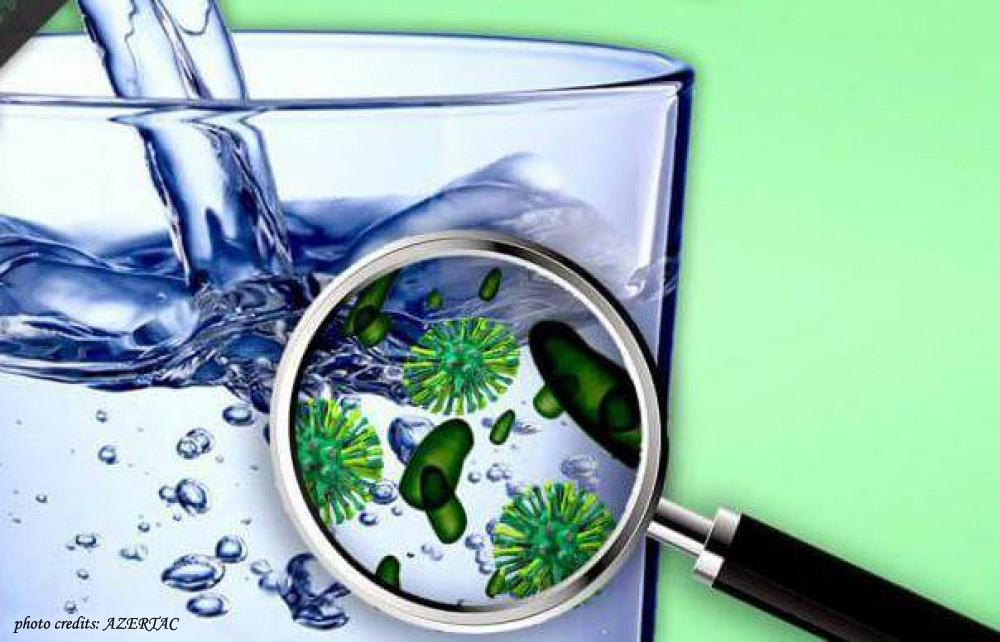WATERBORNE DISEASES: ‘A GRADUAL AND INSTANT KILLER’ BE INFORMED
Water is a universal solvent capable of dissolving a variety of different substances. Improving health …begins with access to safe Water
Water is a universal solvent capable of dissolving a variety of different substances. Improving health …begins with access to safe Water
Did you know that half of the world’s hospital beds are filled with people suffering from a water-related disease? In developing countries, about 80% of illnesses are linked to poor water and sanitation conditions. 1 out of every 5 deaths under the age of 5 worldwide is due to a water-related disease. Clean and safe water is essential to healthy living.
Every glass of dirty water is a potential killer, diseases such as typhoid fever, and many other diseases still run rampant in the developing parts of the world. The commonest diseases are as follows;
Bacterial diseases
Untreated drinking water and faecal contamination of water is the major cause of diarrhoea. Fever, abdominal pain, nausea, and headache are major symptoms of diarrhoea. Vibrio cholerae is the organism responsible for the cholera disease caused by contaminated water. This bacterium produces toxins in the digestive tract. The symptoms of this disease are watery diarrhoea, nausea, vomiting and watery diarrhoea that lead to dehydration and renal failure.
Shigellosis is a bacterial disease caused by Shigella bacteria. It affects the digestive tract of humans and damages the intestinal lining. Watery or bloody diarrhoea, abdominal cramps, vomiting and nausea are symptoms and they can be cured with antibiotics and good hygienic practices.
Typhoid and paratyphoid caused by Salmonella typhi and Salmonella paratyphoid respectively are symptomatic in enteric fever and are acute, inflammation of the intestine and often death occurs. The main sources of infection are contaminated water or milk and, especially in urban communities, food handlers who are carriers. Their germs are passed in the faeces and urine of infected people. People become infected after eating food or drinking beverages that have been handled by a person who is infected or by drinking water that has been contaminated by sewage containing the bacteria.
Viral diseases
Hepatitis is a viral disease caused by contaminated water and infects the liver. Jaundice, loss of appetite, fatigue, discomfort and high fever are symptoms of hepatitis. If it persists for a long time it may be fatal and results in death. Encephalitis is an inflammatory disease spread by the bite of infected mosquitoes. Culex mosquito lays their eggs in contaminated water. Most people don’t show any symptoms but some symptoms are headache, high fever, muscle stiffness, and convulsions. However in severe cases coma and paralysis result. The Poliomyelitis virus is responsible for poliomyelitis. Sore throat, fever, nausea, constipation and diarrhoea and sometimes paralysis are symptoms of poliomyelitis. Gastroenteritis is caused by different viruses including rotaviruses, adenoviruses, caliciviruses and the Norwalk virus. Symptoms of gastroenteritis are vomiting, headache and fever. Symptoms appear 1 to 2 days after infection. Sickness can be dangerous among infants, young children and disabled people.
Parasitic diseases
Cryptosporidiosis is a parasitic disease caused by the Cryptosporidium parvum. It is a worldwide disease and symptoms are diarrhoea, loose or watery bowels, stomach cramps and upset stomach. Cryptosporidium is resistant to disinfection and affects the immune system and it is the cause of diarrhoea and vomiting in humans. Galloping amoeba is caused by Entamoeba histolytica and affects the stomach lining. This parasite undergoes cyst and non-cyst forms. Infection occurs when a cyst found in contaminated water is swallowed. Symptoms are fever, chills and watery diarrhoea. According to WHO, diarrheal cases are about 4 billion and result in 2.2 million deaths. Giardiasis is caused by Giardia lamblia. Cells of the intestinal lining may become injured. Giardia is resistant to wintry temperatures and disinfectant. Sometimes it is known as traveller’s disease. People suffering from giardiasis have symptoms of bloating, excess gas, watery diarrhoea and weight loss.
Source: Allied Academies (Courtesy: Mehtab Haseena et.al, 2017: Water pollution and human health, Environmental Risk Assessment and Remediation (2017) Volume 1, Issue 3), WHO, The Water Project.



Leave A Comment